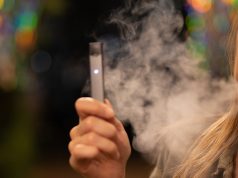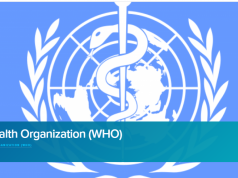Harm reduction programmes are in fact implemented in most Western countries and aim to mitigate the negative consequences associated with substance use without necessarily requiring abstinence. For instance, harm reduction initiatives for illicit drug use often include needle exchange programs, supervised injection sites, and access to methadone or naloxone to prevent opioid overdoses. This is also the case in the US.
However, when it comes to tobacco smoking, the States has inexplicably favoured a more prohibitionist approach, insisting on abstinence and cessation efforts over harm reduction strategies. Despite evidence supporting the effectiveness of the latter in reducing tobacco-related harm, regulatory barriers, cultural attitudes and political agendas have hindered the widespread adoption of harm reduction practices in the context of smoking.
Endorsing the use of safer nicotine alternatives for smoking cessation actually works
Sweden’s endorsement of smoke-free alternatives such as snus and vapes has led to a significant decrease in smoking rates and tobacco-related diseases. In contrast, the US has struggled with high smoking rates due to restrictive regulations on alternative nicotine products. In line with this, the report calls for a re-evaluation of tobacco policies in the States to prioritize harm reduction, citing Sweden as a blueprint for success. It emphasizes the need for evidence-based strategies to build healthier communities and reduce the devastating impacts of tobacco use.
Responding to Commissioner Califf’s statements, Dr. Brad Rodu, a Professor of Medicine at the University of Louisville and a leading proponent of tobacco harm reduction, reiterated that not only is THR is not an industry term, but it is a sensible and crucial public health strategy.
In fact, added the Professor, the British Royal College of Physicians (RCP), one of the world’s most reputable medical societies, is one of the many trusted entities which has long advocated for THR. The RCP has consistently emphasized that nicotine itself is not particularly hazardous and that if it could be delivered in safer forms, millions of lives could be saved. The Royal College underscored that harm reduction is a fundamental aspect of many areas in medicine, yet it has not been adequately applied to smoking.
Dr. Rodu explained that the resistance to THR in the United States may stem from misinformation or a deliberate attempt to undermine a potentially effective public health strategy in pursuit of a “tobacco-free society.” Despite evidence supporting safer smoke-free nicotine and tobacco products, US public health policy often focuses solely on prohibiting all tobacco and nicotine use, overlooking the needs of adult smokers who are unwilling or unable to quit.
The anti-tobacco evolved into an anti-nicotine crusade
In an email communication discussing the US government’s anti-THR agendas further, the Professor told Vaping Post that the initial anti-tobacco movement of the 90’s, had proceeded to turn into a crusade, which has now been extended to vaping and/or nicotine in general.
“There is no question that the anti-smoking campaign evolved into (1) an anti-tobacco crusade and (2) now an anti-tobacco/nicotine crusade. I experienced the first stage in 1994, when I published my first article in Nature on the differential risks between smokeless tobacco (ST) use and smoking. I was attacked by the entire anti-tobacco world (here and here).
It is widely acknowledged that the 1998 Master Settlement was negotiated mainly by Philip Morris and Matt Myers [President of the Campaign for Tobacco-Free Kids]. Given that, I think both sides were pretty happy with the bi-polar anti-smoking war, and quite frankly THR, mainly from ST, had no significant impact.
However, cigarette manufacturers eventually started planning for cigarette’s ultimate decline. Reynolds purchased ST company Conwood in 2006 (here), followed by development of Camel Snus; Altria purchased the world’s largest ST company UST in 2008. Of course, e-cigarettes transformed everything for cigarette manufacturers and crusaders, but the former responded faster.”
I think that the explosive popularity of e-cigarettes/vaping forced crusaders into my second stage. Crusade is the operative word because it is good versus evil. Russell Baker used these words in a 1994 New York Times column describing the anti-tobacco crusade: ‘Crusades typically start out by being admirable, proceed to being foolish, and end by being dangerous.'”
Nicotine was never the issue
Harm reduction, which offers safer nicotine alternatives, should be a key strategy to mitigate the deadly consequences of smoking. The focus on banning these alternatives does not consider the harm caused by traditional cigarettes. Nicotine is often demonized, despite studies indicating that its health risks, when not associated with cigarette smoke, are minimal.
The Royal College of Physicians found that vapour inhalation from e-cigarettes is unlikely to exceed 5% of the harm caused by smoking tobacco. Sadly, sensationalized reports and entrenched biases against nicotine contribute to misleading public narratives. What the US needs, is a pragmatic approach that acknowledges the diverse needs and preferences of smokers, focusing on saving lives rather than pursuing unattainable ideals.
The dangers of prohibition
Prohibition of safer nicotine alternatives only serves the tobacco industry and black markets, while undermining harm reduction efforts. Rodu concluded that the FDA should focus less on semantics and more on providing adult smokers with safer alternatives and promoting healthier outcomes. Any connotations of the term “tobacco harm reduction” should not overshadow the ultimate objective of reducing smoking-related harm and mortality.
“THR is slowly succeeding. But imagine how much faster lives would be extended if the moral crusade dissolves. The entire U.S. federal government is fully vested in the National Cancer Institute’s vision: “a world free of tobacco use.” (here) Regardless of FDA CTP officials’ pronouncements, the agency is now regulating tobacco according to that vision in the strictest possible manner,” he explained.








